On the way to Palenque we stopped off on the twisty, mountainous road to go swimming in Cascadas Agua Azul. It was delicious to get out of sweaty hot bike gear, exposing our sweaty, spongy flesh to the refreshing water and the gentle sun, filtered through the leaves and humidity of the jungle. Whilst twisty in sections, this was also The Road of Topes / Tumelos, (sleeping policemen), most of them locally made by those Chiapans living nearby. It was frustrating to have to keep slowing down, for no apparent reason in the middle of nowhere and with no signs or warnings. There were some signs saying you are now entering Zapatista Chiapas, Viva la Revolucion, etc, most probably left over from the period of several weeks a decade ago when the region claimed and effectively achieved independence under the balaclava - clad SubCommandante Marcos.
The road improved in the end, although increasingly surrounded by the electric hum of cicadas and the humidity of the jungle as it closed in on us as we descended towards the Caribbean. Onto the gates of Palenque National Park, avoiding the surprisingly large town, and we stayed in the Jungle Palace. It was a lovely setting as we parked amongst the trees and I got settled into a quiet isolated corner, next to the stream and recovered from the biggest bead - on since Bandar - e - Abbas in the gauze cube that would be my home for the next 2 nights. A combination of too much Bohemia and the noise of the jungle at night outside and scuttling and scurrying across the concrete floor of the hut, meant I was up before dawn. Listening to the ringing, chirping, buzzing, sawing, wailing and knocking of the early morning jungle noise, I decided to get up and walked and talked on the phone to my Mum and my brother and got ready to explore the ruins with Hamish and Emma, our last day together. They too had a bad night due to noisy neighbours and so we went back to sleep and went to the ruins in the heat of the day, when all the coaches had left. We had a great day, tramping over the impressive Mayan site and soaking in the relaxing, if hot and sweaty atmosphere together.
Hamish and Emma are a great couple who shared a lot in common with Lena and I. Hamish and I got on very well as he was always keen for a cool beer and Emma was a unique person too, always having an interesting perspective on things. For instance, she was wearing a balaclava under her helmet in the Mayan jungle, Commandante Marcos style, and when I first met her in Medellin, she offered me some delicious sprouting beans that she was growing in a plastic pot in her pocket - all whilst on a motorcycle adventure trip through Latin America. They were Ex Pats, having lived in Malaysia and both enjoyed writing; we could share stories about some of the places we had travelled to and people we had met (on this trip and before) and motorbikes of course. Still by the end of our time together at Palenque I am ready to get going by myself again. I am confident we all had a great time together in Central America and Southern Mexico, which is pretty remarkable really given we were initially strangers having only met briefly in Medellin beforehand. I sensed in myself over the last few days, a feeling which I believed was reciprocated by Hamish and Emma, that we were all anxious to resume our trips at our own pace, without the added logistical difficulties and inevitable individual compromises that travelling in a group, even a small one entails. They have become firm friends and I will definitely keep in touch with them and hope to meet up with them in the UK over the summer when we are all back and hopefully beyond that too.
Palenque was remarkable for its setting amidst the jungle, throbbing with life, like the skittish lizards with a fin fan thingy across their heads and the striped toucans, both of which would thrash through the vegetation on your arrival into a quiet glade on the heavily wooded northern sections of the ruins. Also, the similarities with ancient Asian, particularly Chinese, archeological sites was striking to me. The prolific use of cinnabar red and jade green, the creation of jade death masks and the employment of terraced pavilions along with the almond eyes of the Mayan figures depicted in the statues and friezes. The whole site was on a grander scale than Copan and the musuem highlighted some interesting exhibits and facts, like the fact that Venus was the God of War for the Mayans. This, and a lot of other interesting facts, were all revealed because the Mayans, unlike the Incas of Peru, did have a glyphic writing system, which phonetically still sounds like the present day local dialect - Chotl. More remarkably still however, is that they could build on such scale and with such artistic detail with no metal tools, no wheel and no beasts of burden, just like the Incas.
After tramping around the jungle and getting back for a shower, I met Loiusana Steve and his dog, Pachunki, which was Chotl for stone. He invited me up to his place for a coffee. He was an interesting character who had retired from the US Navy twenty years ago and ended up in Mexico because of the cheaper cost of medical care than in the US. He was a cyclist and biker and we talked about routes, etc for a while, whilst Fox News played loudly from his home theatre system, oddly wrapped in plastic bin bags to protect it from the humidity of the jungle. It gradually became clearer to me that he had also left the US because he was a very right wing person politically, and was dissatisfied with the "liberal track the country had taken recently"! This included examples of how Taser parties were becoming more popular, according to Fox News. These electric shock guns are completely unregulated in the US, and apparently, those "liberals" who feel uncomfortable openly owning a gun, are increasingly attending parties run along the lines of Ann Summers or Tupperware parties, trying out the product and choosing various fashionable covers, like mobile phone covers, and holsters before making their purchase. Good ol' boy Steve, just couldn't understand why they didn't just buy a regular automatic weapon for godsakes!? I made my excuses and left. It was a shame that his bigotry had made me rush off as Pachunki was a great dog.
The Howler Monkeys were about again during the darkness of the pre-dawn, and after a charming dawn breakfast with Hamish and Emma, I got on the bike to go and realise they had been using my bike as high - altitude target practice, crapping on bike from above. Charming! Again, another dubious guidebook statistic says that they are the largest primate in the Western Hemisphere. They may actually be bigger than the Mayans in their local area, but they are certainly not bigger than the larger North American branch of the dominant Homo Sapiens Sapiens simian species. I realised during this period that I am developing a loner mentality and significantly start singing "One Man Guy" by Loudon Wainwright III to myself in my helmet - studio as I leave the jungle fastness of the Mayan kingdom for the mountains of Oaxaca and the Zacotec federation. First I have to sweep down close to the Caribbean between Villahermosa and Minantitlan. It was officially 38 degrees today and I use one of the stops at the expensive pay booths for the toll roads and put sun screen on but it was soon so hot again that it ran into my eyes, making my vision blurred. Just like the Howler Monkeys at dawn earlier that day, you could smell Mexico City before you could see it. Tired and with sore eyes from the baking heat and sun screen an daunted by the prospect of entering the heart of the largest city in the Americas on Friday rush hour, I stop in the nearby suburb city of Cordoba for the night.
Checking in at a hostal on the main square, I feel half deaf as well as half blind as I can barely understand the speed and accent of the lady who owns the place and is trying to direct me to the garage door at the back. There is definitely a faster, sing song and nasal Spanish in Mexico than I have been used to and it seems to be getting faster as I get closer to Mexico City. I take a stroll in the early evening and check out the old cathedral bells in the square from the old church that fell down, yep you guessed it, from an earthquake in the nineteenth century.
Mexico City is a great American City (certainly THE greatest American City in terms of its sheer size) and suffers from all the glories and shames of all its lesser cousins to the north and south. Poverty, crime, great architecture and food etc. Riding through the hillside townships, before descending into the smoggy valley of Tenochtitlan. This is where the legend of Quetzalcoatl is linked with the founding of the city, when an Aztec ancestor saw an eagle swoop down and take a snake hanging from a cactus to cool down. The sight of the eagle flying away with its prize, looked like the legendary plumed serpent and that was seen as a good omen, leading the Aztecs to found the city of Tenochtitlan on the site and the post - independence Empire of Mexico to use the symbol as its new bandera nacional. I soon got lost, but knew I wasn't far from the centre, so I hired a Vocho taxi (the unregistered green and white V Dub taxis of Mexico City), driven by the friendly Vochero, Diego, to lead me to the Zocalo, the heart of historic Mexico City and Tenochtitlan before it. The Spanish built the current Cathedral over the Templo Mayor of Tenochtitlan, (apparently an enormous pyramid, possibly the biggest in the world ever built, with twin temples to the Sun and the Moon built on top) which in the same unmentioned guidebook, is listed as both the oldest and largest in Latin America, first built in 1525 and added to in several waves of construction since. The bell towers lean at alarming angles, as do a lot of older buildings in the city, due to seismic activity and make a great scene on the Zocalo, along with the Palacio Nacional and an enormous bandera nacional, which was only marred by a lot of construction work in the centre of the world's second biggest public square.
Mexico City has Museums and Avenues to rival Paris and St Petersburg, monuments and history to rival London and Berlin, food and drink to rival Bangkok or Sydney and public art to rival Barcelona. For instance, there were hundreds of fantastical Leonora Carrington paintings displayed all along the Paseo Reforma approaching the jewel in the crown of Latin American Museums. The Museo Nacional de Anthropologia houses an enormous collection of material (statues, weapons, artifacts and whole buildings) from the whole range of pre - Cortes Mexican cultures. Massive Olmec heads, an enormous statue of the God of Water and loads of models of quetzalcoatl looking like a chinese dragon in many of its representations across millenia of the various Mexican civilisations. I learn that in Chihuahua they used to breed the dogs of the same name for food and that Tenochtitlan was preceeded by the older city of Teotihuacan, which lies 40kms to the north and still incorporates the pyramid of the sun, second only in size to the Great Pyramid of Cheops in Giza. The area around the museum, the Bosque de Chapultec, is also full of interesting monuments and Mexicanos relaxing in the biggest green space in a generally very dirty and polluted city. There are some odd staturary bedfellows of the twentieth century outside - Churchill, Gandhi and Tito are all in close proximity, great personalities who couldn't stand each other in real life and yet face each other in heroic poses for posterity.
However, the city also has a chaotic and unfinished feel about it too. The Monumento de Revolucion started life as the new portal to the National Assembly formed after the revolution of 1910 but the political situation changed and the assembly was never finished, with a much smaller cabinet meeting in a small room behind the Palacio Nacional instead. Here is another great example of chaotic Mexican political history. Diego Rivero painted a mural to depict the entire history of Mexico from Cortes' capture of Tenochtitlan to the modern period, with Iturbide, the Basque dictator who ruled Mexico for the first 2 years after Independence, the imported Habsburg Emperor Maximilian, the bandido turned revolutionary leader, Pancho Villa and even his wife and iconic artist, Frida Kahlo are all depicted in a compelling swirling scrum of a riot, which in my view pulls off the audacious objective set by the artist. Other murals depict the major pre - Cortes civilisations including the Mexica (Aztec), Mayan and the earlier Olmec and Toltec.
Just to give you some idea just what an audacious visual extravaganza Rivera's murals at the Palacio Nacional are, here is a potted history of just less than one of the five centuries of Mexican History that I picked up from my visit. In 1821, after the revolution in Spain, the Empire of Mexico (it then included all of Central America, apart from Panama which was part of Colombia and most of what is now the western United States) declared Independence under Augustin de Iturbide, the Basque General. He lasted for 2 years before a federal republic was formed, with an uneasy balance between radical and conservative forces. General Santa Ana established military control after a brief civil war and managed to lose the province of Texas, who had rebelled against the Mexican abolition of slavery in 1829, later to be annexed by the USA in 1845. Mexico obviously didn't like that, so they marched onto the Alamo (which they eventually took), were later repelled and the US occupied Mexico City in 1847. In the treaty that followed, Mexico lost slightly more than half its total terrority to the USA, from Texas to California and from the Rio Grande to Oregon. Popularist Benito Juarez then started to implement liberal reforms, contested by the conservatives and the catholic church in another civil war and when he tried to nationalise the oil industry, the Spanish, French and British invaded to protect their interests. The French stayed to occupy Mexico City and Juarez withdrew to fight a guerilla war, whilst the French installed Maximillian Habsburg as a puppet Emperor. He managed to force the French to leave with the help of his Prussian cousin's growing influence in Europe, but was captured and shot in 1867 by the guerillas of Juarez, who returned as President and unusually died of natural causes in 1872. General Porfirio Diaz took control after a period of initial unrest, until 1910, when a new revolution occured. which amongst others involved Pancho Villa, who raised an army in the north from his network of bandidos and successfully marched on Mexico City. Phew! See what I mean!?
One evening I went to see the Mariachi bands touting for business at the Plaza de Garibaldi (which was actually a bit sad) and stopped for a beer at the Salon de Sol, which is not a tanning studio, but a bar sponsored by Sol Cerveza and sells cheap snacks, normally frequented by locals. Fortunately they also serve more palatable Mexican beers, like Negra Modelo, Bohemia and Dos Equis Amber. There was a football match on between Club America of Mexico City and Chivas of Guadalara. The most amusing thing of the whole scene for me, apart from enjoying the cool beer and the tacos caliente, was the replica shirt worn by the fans. One group of Club America supporters who I got chatting to, a "gang" who called themselves Lopez's Lobos, were full of macho posturing, overflowing with beery fizz and testosterone and yet they were proud to wear "Bimbo" emblazoned across their chests, the brand name of the Mexican brand of spongy white Mother's Shame bread and sponsor of their team.
Mexico has very expensive toll roads (which I used sometimes as they stop me getting lost) however, oddly the deserted roads in the middle of nowhere are the most expensive and the city sections are the least expensive or free!? That is before you count in the cost of propinas for the local filth. The six - lane Highway 57 out of Mexico DF towards Queretaro, despite being horrendously busy is also off limits for motorbikes. Another strange example of Mexican traffic regulations, trucks and motorcycles have to constantly use the feeder roads that run parallel to the highway between each junction. They are old, two lane highways, badly surfaced, punctuated by traffic lights and glorietas and horrendously congested. Unfortunately I became familiar with them in great detail after being pulled over by Officer Gomez from the main highway, oblivious to the restrictions. Clearly I had broken the law, he was able to point to a tiny sign on the road, but the apparent on the spot fine of 1,600 pesos seemed well over the top, so I decided to go into my well practiced routine of acting stupid and refusing to pay. However, Gomez was a professional, and by this time the tow - truck (to commandeer my bike) and 3 of his mates in uniform have arrived, playing the good cop, bad cop routine to a tee and it becomes clear that neither I or my bike are getting out of there until I hand over some pesos. I manage to get it down to 250 pesos and get off sharpish, or as sharpish as possible on the clogged service road that trucks and bikes have to use, relieved to be on my way and that they didn't ask me for my non - existent insurance.
Into Zacatecas during stormy weather and into the town that feels more Spanish than Spain. It was founded in 1548 when the country was known as New Spain, although most of the archetecture is not very new and the town has avoided the sort of cheap development that has scarred Spain in the 1960's and 1970's, as well as during the last property boom there. Unfortunately, not only was I soaking and cold at over 2500 metres of altitude, but there was hardly a room left in the town due to a festival, I had to go for an expensive as the only place available with safe parking for the bike. This is always a priority, but with the streets thronging with people and firecrackers and rocket going off, it was even more important during the fiesta. The Hotel Quinta Real is built into the side of a bullring, with an aqueduct soaring over the circular arena, both of which were built of the local rose stone and in the sixteenth century, I soon fell asleep, tired from the ride and the lack of sleep in the noisy hotel in Mexico DF. Next day I looked around the city at the elegant cathedral and then walked around the Mina de Eden and took the telepherique up to the Cerro de Bufa, to overlook the town. For obviuos reasons, it reminded me a lot of Potosi in Bolivia, as geologically they were both similar, previously relying on their silver deposits but now mining the pockets of tourists. However, the difference between the richest and the poorest country in Latin America was stark. The closer I was getting to the US border, the bigger and newer were the trucks nd it was clear that a lot of money has been spent in Zacatecas to clean up the monuments and make this a comfartable place for visitors from north of the border.
On the way to the Copper Canyon I stopped in Delicias, just outside for petrol and was tempted by the trucker's cafe, La Posta de la Viajeros and their comida corrida. It consisted of caldo, arroz, guisado del dia (chiles rellenos) y frijoles refritos all for 45 pesos, or about 22 pence. I eventually arrive in Creel in the dark and wet soaked to the bone and hoping the weather improved tomorrow. I stayed at the small but friendly Parador la Montana, but didn't have a good night as my bike had to stay outside on the street and I kept waking up to check it was OK. Next morning the weather wasn't any better, some of the trails were closed due to flooding and the views were obscured by the clouds, rain and mist blown over the multicoloured cliffs and peaks by the strong cold winds. Most of the men here wear sombreros y botes de vaqueros and I entertain myself with Clint Eastwood fantasies every time I walk into a place here. I keep execting someone to sidle up to me and say "you ain't from these parts are you?" as seems to happen in all his Westerns - Outlaw Josey Wales, Pale Rider, High Plains Drifter, Unforgiven, etc. It is certainly wild and it is western here. Less than 100 years ago that Pancho Villa was causing trouble hereabouts as a bandido. But because he was only doing that mai9nly with Gringos and then shifted careers to become the Northern General in the forces of the Revolution, he is a local hero.
Just last week on the MSN website I was morbidly interested to see this report which wouldn't be out of place in a Wild West tale from 150 years ago ...
"Assassins gunned down a senior police official in the border city of Ciudad Juarez early Saturday as Mexico's gangsters pressed their counteroffensive against the country's security forces.
Municipal Police Chief Juan Antonio Roman was shot about 2 a.m. in front of his house on the outskirts of the city, which is across the Rio Grande from El Paso.
Another of Roman's police commanders was shot shortly before he was killed.
Roman's was one of more than 100 deaths, including those of at least 20 police officers, attributed to organized crime last week across Mexico. Among those killed were a top commander of the Federal Preventative Police, whose gray-uniformed agents have spearheaded a crackdown on the criminal underworld.
Gangland violence has been sweeping Mexico as powerful narcotics smuggling gangs battle one another for dominance. At stake are the lucrative smuggling routes through the country to transport cocaine, marijuana and other narcotics to U.S. consumers.
President Felipe Calderon launched an offensive against the gangsters upon taking office in December 2006, dispatching some 30,000 troops and federal police to the most violence-plagued communities.
While failing to seriously curtail narcotics traffic, the offensive has weakened some criminal organizations, enhancing bloody internal rivalries. By some media counts, more than 3,000 people have died in the past 17 months, including scores of police officers and soldiers.
Violence against police was rare until recently in Mexico, as gangsters preferred to use silver instead of lead to persuade officials to leave them alone. But amid Calderon's offensive, the gangs have started hitting at the local, state and federal police.
"It's a war between the cartels and against the state," said Victor Clark, a human rights activist in Tijuana. "The government action has dealt a blow to the interests of organized crime, And they're fighting back."
Roman's name headed a list of "executable" city police officers that was publicly posted by gangsters in January.
Standing in the street in front of his house, with his wife and three children inside, Roman managed to shoot back at his killers but was cut down in a volley of more than 60 bullets, said Jaime Torres, a Ciudad Juarez police spokesman.
"He was able to repel the attack, but he was outnumbered," Torres said. "It's a very sad day."
Calderon called Friday for his nation to unite against the gangs. But years of endemic police corruption and abuses have left many Mexicans cynical.
Mexican officials have acknowledged that some officers — especially local and state forces — have been killed for their role in protecting one criminal gang or another rather than in the line of duty.
"They haven't been able to break the ties between the organized criminals, police and political power," said Clark, noting that 144 municipal and state police officers were fired in Baja California last week.
The federal police commander killed Thursday, Edgar Millan, was met by assassins as he arrived home in Mexico City. Investigators suspect they were helped by someone from within the federal police."
I decided to head out of town and head to the border, concerned about the weather and my soon to expire documentation. There were however lots of Road Runners in evidence on the roads, which even though they weren't as colourful as their Warner Bros cousin and the only coyotes visible were roadkill on the edge of the carriageway, they were nonetheless entertaining on the long straight roads. The mountains of the Sierra San Catalina look sombre, with their cap of dark grey ominous clouds like a sombrero pulled low over their face against the sharp winds and lashing rain. Racing the storms along the geometrically precise desert roads. A vast muddy inland sea had opened up to the valley to my east as I headed north that wasn't marked on my map. I stopped off at a flooded truck stop in Villa Ahumada for a warming coffee. The AC was on full blast despite the unseasonable cold weather and so I headed back out across the High Chapparal towards Ciudad Juarez without a sign of Lorne Greene and his family anywhere. By the time I got to Villa Ahumada the town itself was flooded, with only the elevated railway with its triple decker carriages soaring above in the dry, and so that was the route I took out of town. Beforehand, I stopped to have a coffee to warm up and to get insurance, which was advertised along the way, but none available here for motorbikes, hopefully in Ciudad Juarez.
I see that my bike has got caked in mud and dirt. Mud has its uses though - at least I will be able to tell whether the oily patch on my engine covers was from the previous petrol leak I noticed when leaving Chiapas or a more worrying oil leak. Heading into Ciudad Juarez, I start to see the biggest concentration yet of all the maquilladora factories and the resultant truck traffic. I quickly find myself at the border bridge (without insurance) and head into the customs area. My bike and luggage is checked thoroughly and I have to queue for a long time to get my passport stamped. However, somewhat strangely, despite my prompting, no - one is interested in my motorbike title documents and so I ride off into the city of El Paso as it is starting to get dark by this stage. I quickly come to the conclusion that there are a lot of crazy people in El Paso. On the way for a celebratory beer, I went to the Tap in the downtown area, there were lots of people talking and shouting to themselves in the streets. Only later did I realise that they were using bluetooth handsets, something which is still not common in Latin America. I really mIssed Neil as we could have cleaned up at pool due to the mediocre standard on display at the table in the back. I also met Crazy John, who "befriended" me at the bar. He said he worked for the "JD" (Justice Department" as a secret agent / hired gun assassin who had travelled all over the world. I think he wanted to make sure that I knew he had been to more places than me! Anyway, I made my excuses, having to resort to being rude, safe in the knowledge that most secret agents don't tell strangers in a bar that they are secret agents.....
Leaving the city the next day, I really noticed the enormous trucks and cars where no - one has the window open, even though the weather was hot. The result of this is you can't ask questions of car - drivers as you are in traffic and the big cars seemed like a barrier between them and the outside world generally and me in particular. El Paso was full of offices and signs for bail bond agencies, EZ loans, pawn shops and one dollar shops. There was not a newspaper stand or bookshop in sight. Both observations made me happy to be on my way north. However, I had read that El Paso was a key point on the El Camino Real de Tierra Adentro. In 1598, a wealthy nobleman from Zacatecas, Don Juan de Onate, set out with a party of 500 to claim the northern lands for King Philip II. It took him 4 months to cross the Rio Grande at El Paso (it had just taken me 2 days to do the same trip) and he celebrated with a mass and the first thanksgiving ceremony in North America, jointly with the local Manso Indians, 23 years before the more famous Pilgrim's ceremony in Massachusetts. He extended the Camino Real for 1,500 miles from Mexico City to Santa Fe.
I followed the route of the El Camino Real de Tierra Aldentro, heading north out of Texas and through New Mexico and less poetically now known as Interstate Highway 25, to Albequerque and then west on Highway 40. Getting tired and wet from more showers I stopped and stayed for an unremarkable evening in Sky City Casino on Interstate 40. Tired, mainly because psychologically, the conversion to miles from the now familiar kilometres means that it is taking me surprisingly longer to get to places marked on the signposts. Up early the next day and onto Monument Valley, which is not a national park, just a section of Highway 163, which quickly crosses from New Mexico to Utah and then into Arizona. I really enjoyed the ride amongst the familiar vista and surprisingly, with the addition of some curves too, it was an all over nice ride. There were plenty of other bikes too and I got talking to Brad and Lindi at a fuel stop at a "trading post" who I had passed yesterday on Interstate 40. They had a Harley Night Train with a trailer and were on a 2 week tour of the West from their home in Oklahoma.
Subscribe to:
Post Comments (Atom)
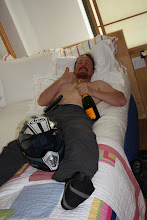
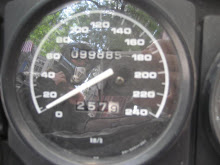
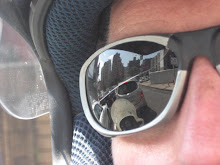
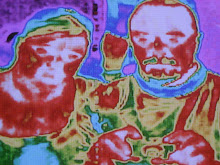





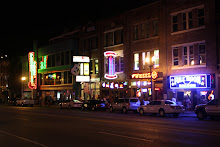



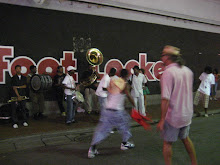


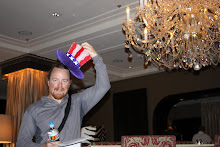
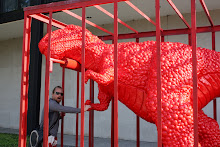
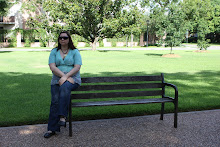



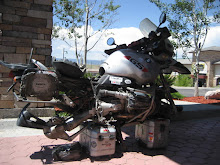


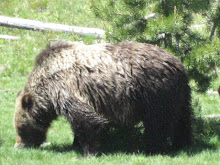
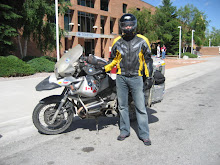
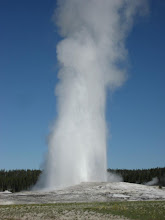



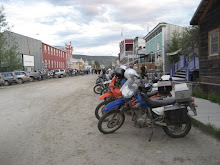


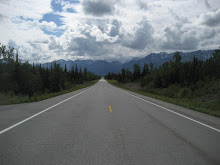

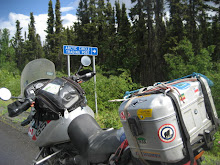
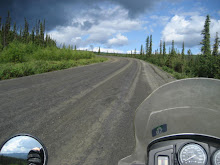
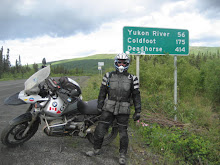
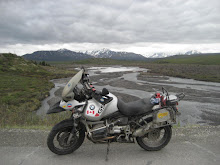
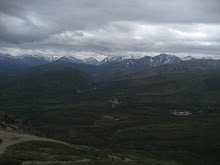
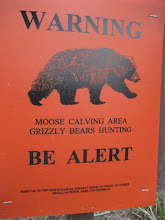


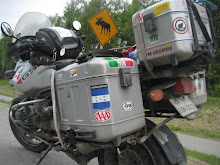
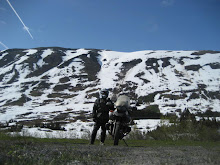

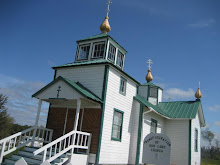
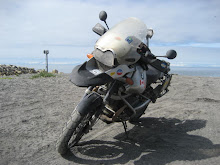

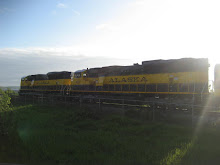
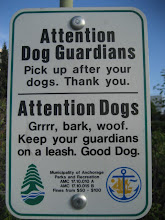
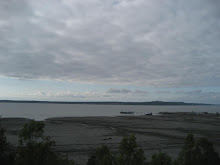




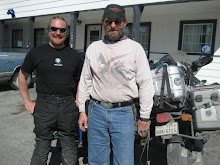

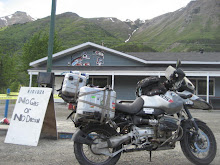




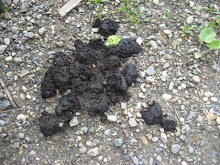

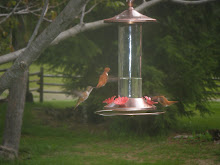
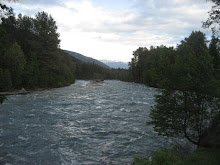
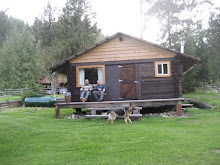
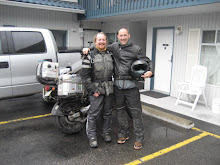
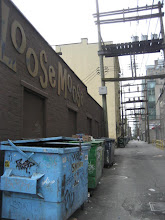
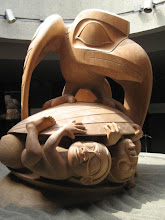
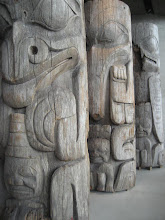
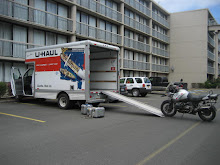




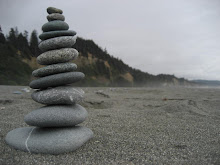
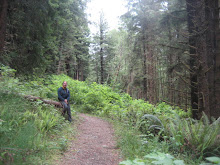
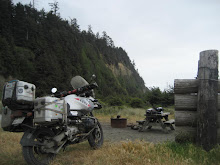
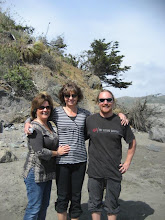

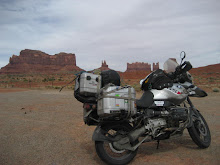
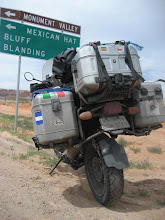
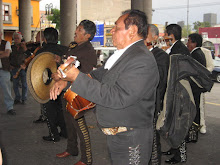
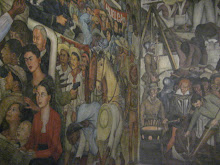



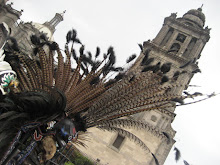
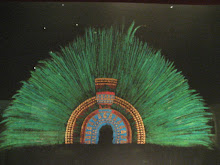
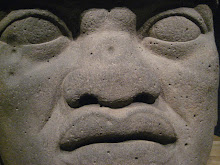
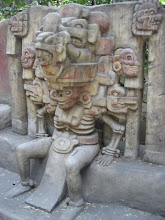






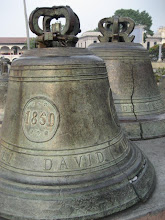
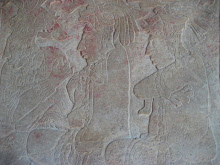
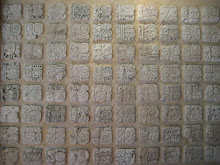
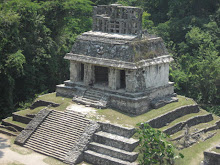




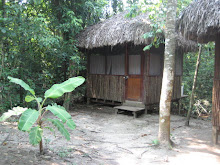
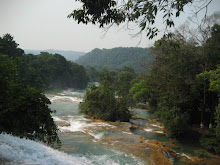
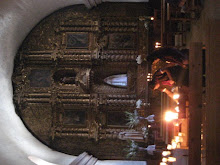
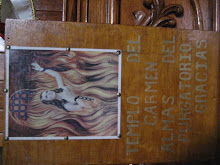
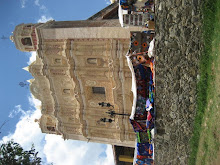


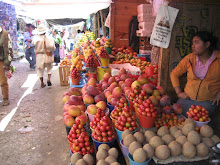
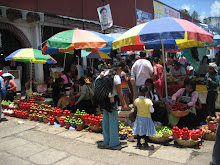
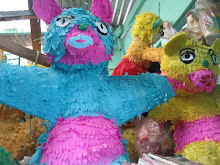
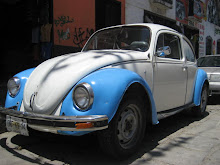
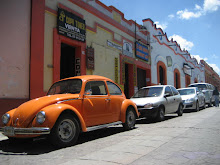

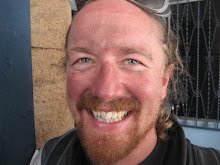
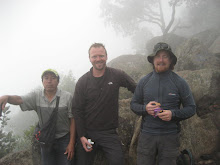


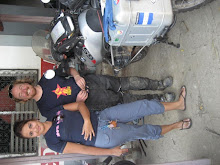
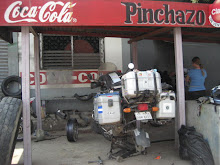

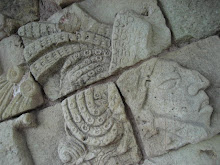

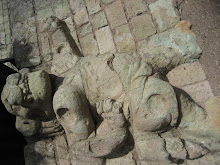


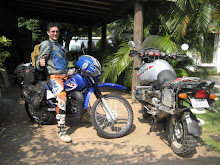







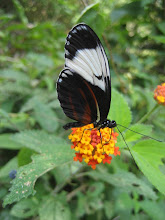
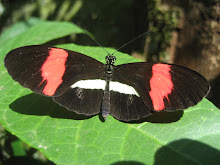
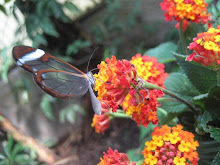
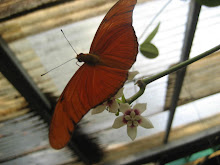
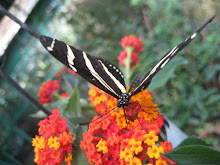
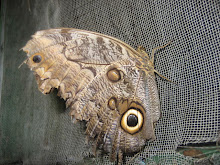

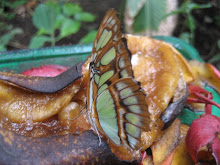
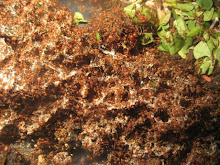
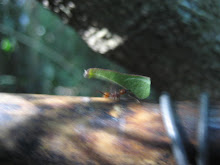


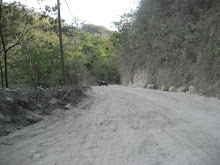

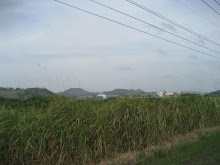

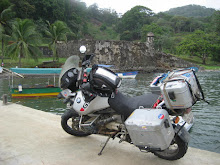
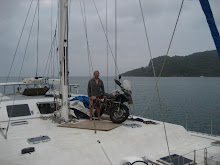
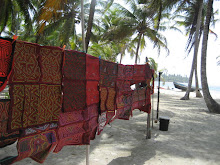

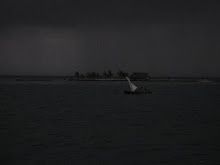
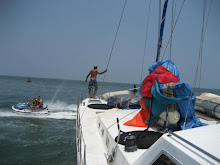
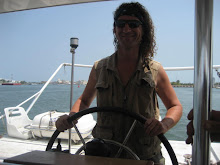

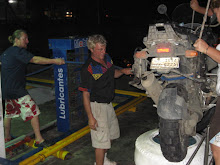
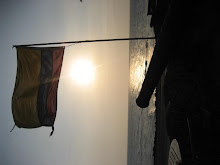
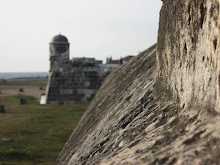
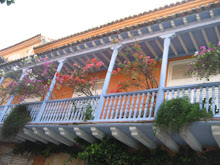
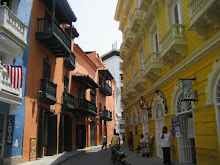
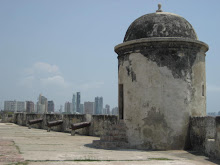
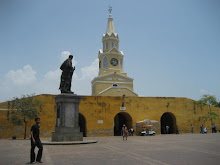
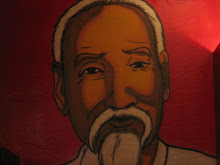
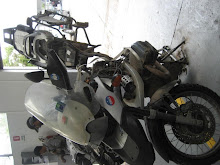



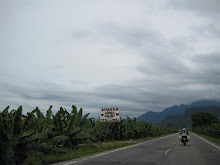
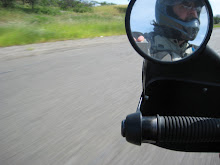
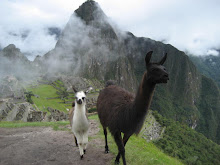



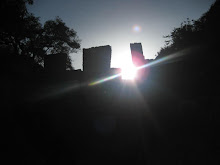


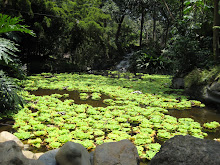
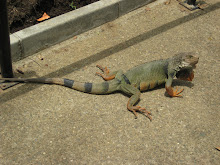



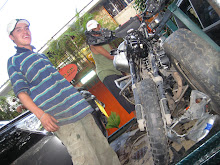

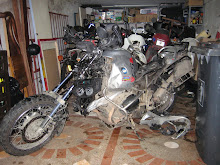
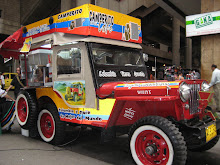
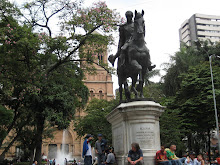
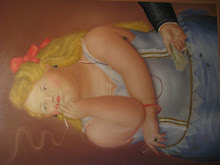
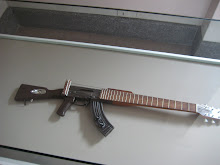
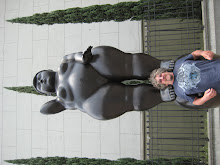
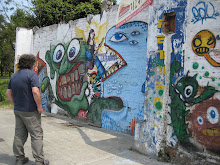


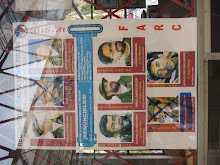
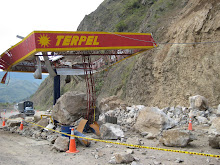
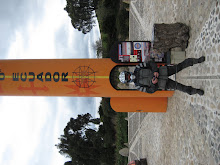
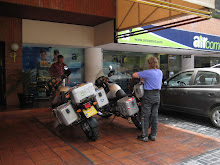
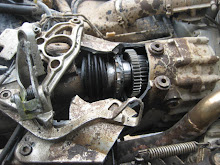
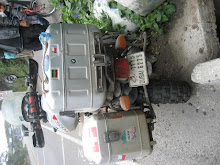

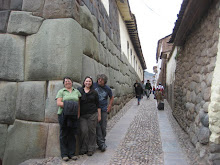


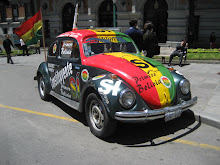
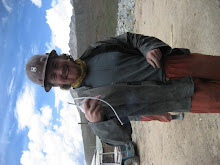


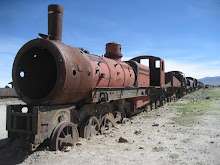



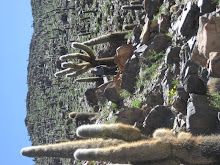
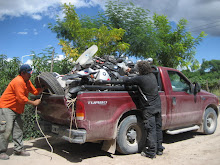
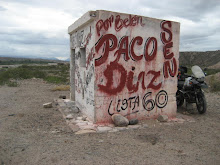

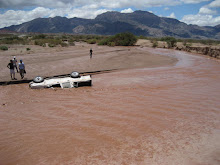
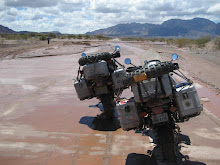
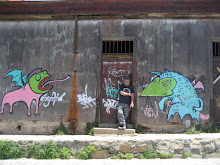
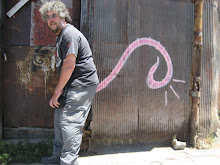



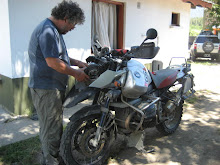
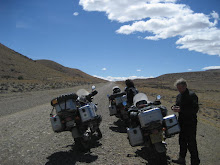







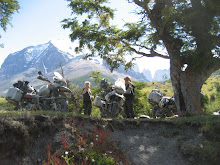

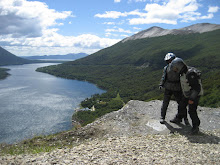

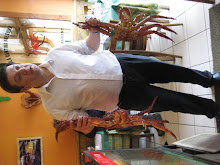
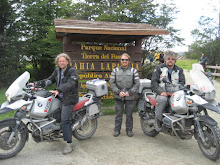

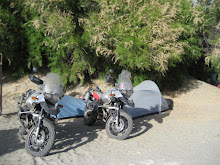




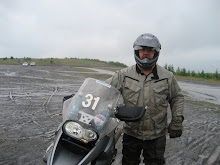
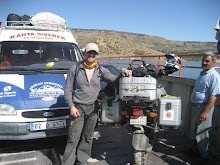
No comments:
Post a Comment